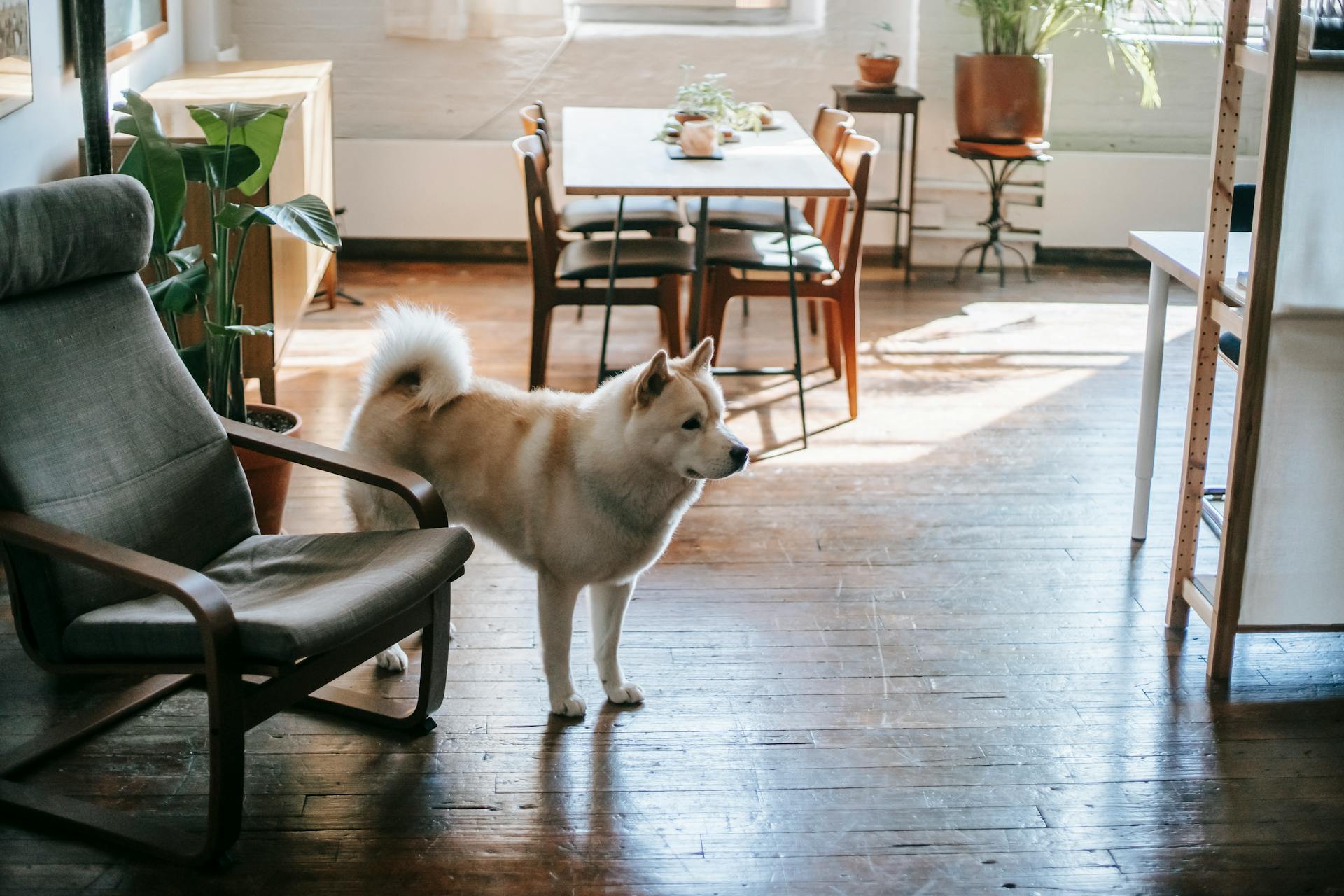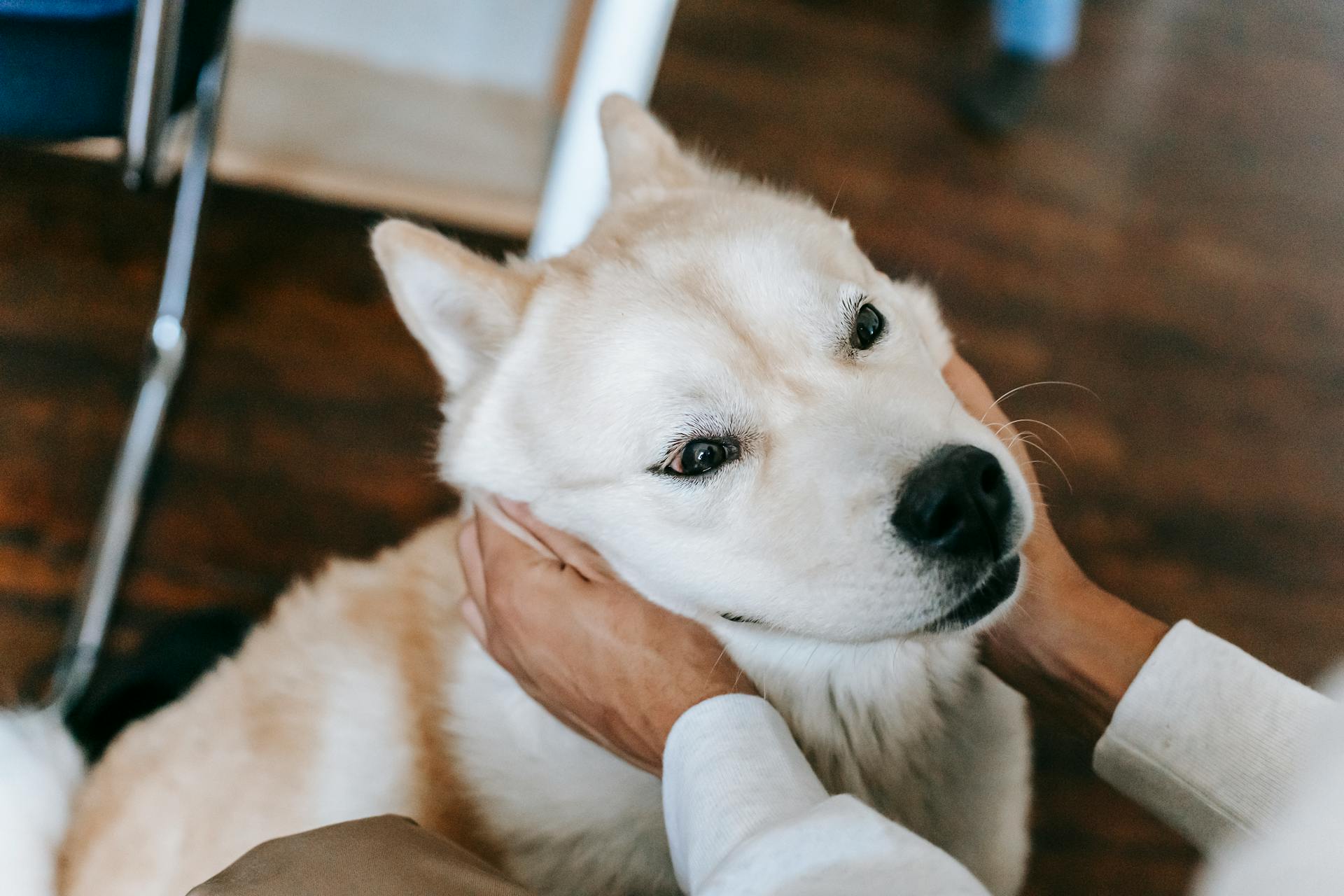
The Akita and the Malamute are two of the most recognizable and beloved breeds in the world. The Akita is a large dog breed that originated in Japan and is known for its distinctive white coat and loyal temperament.
In terms of size, the Akita is generally larger than the Malamute, with males weighing up to 130 pounds compared to the Malamute's 95-100 pounds. The Akita's muscular build and broad chest also make it a formidable sight.
One of the most notable differences between the two breeds is their exercise needs. Akitas require regular exercise to stay happy and healthy, but they are not built for long-distance running like Malamutes. Malamutes, on the other hand, are bred for endurance and can thrive on long, daily runs.
Consider reading: Alaskan Malamute Shedding
Breed Comparison
Both Alaskan Malamutes and Akitas are dogs that thrive on mental stimulation, making them perfect for activities that challenge their minds.
They're also relatively quiet, only barking to alert you to something suspicious.
These large breeds require a solid foundation of socialization and training from a young age to prevent them from becoming too difficult to handle.
Origin
The Akita breed has a rich history in Japan, dating back to the early 17th century when an exiled nobleman developed them as powerful hunters with a strong work ethic and loyal temperament.
Their original purpose was to hunt big game such as wolves, boars, deer, and bears.
The Akita breed's numbers fluctuated over the centuries, but the first Akita breed club was founded in 1927.
The breed gained popularity in the USA after World War 2, when soldiers returned from the Pacific and brought back their love for the Akita.
The American Kennel Club (AKC) recognized the Akita as a distinct breed in 1972.
The Difference Between
The Alaskan Malamute and Akita are two breeds that may look intimidating, but they have distinct differences in appearance and temperament.
The Alaskan Malamute has a range of potential coat colors, such as gray and white, sable and white, and black and white, with brown eyes and a striking mask unless they're solid white.
Take a look at this: Full Grown White Alaskan Malamute
Akita's can look different depending on whether we're examining the American or Japanese versions of the breed, with the American Akita having a black, white, chocolate coat or a combination of the aforementioned colors with white.
The Alaskan Malamute is a powerful and substantially built dog with a deep chest and strong, well-muscled body, while the Akita has a heavy-set bone structure and a bear-like head.
The Alaskan Malamute typically weighs between 75 to 85 lbs, while the Akita can easily reach over 100 lbs in weight.
In terms of exercise needs, the Alaskan Malamute requires more physical activity due to their sled dog heritage, while the Akita can be more aloof and reserved around strangers or pets.
The Alaskan Malamute has a classic Spitz-type appearance, with large fluffy double coats, pointed ears, and fluffy, curled tails, while the Akita has a broad head and a large, curled tail.
Overall, the Alaskan Malamute and Akita may look similar, but they have distinct differences in appearance, temperament, and exercise needs.
The Similarities Between
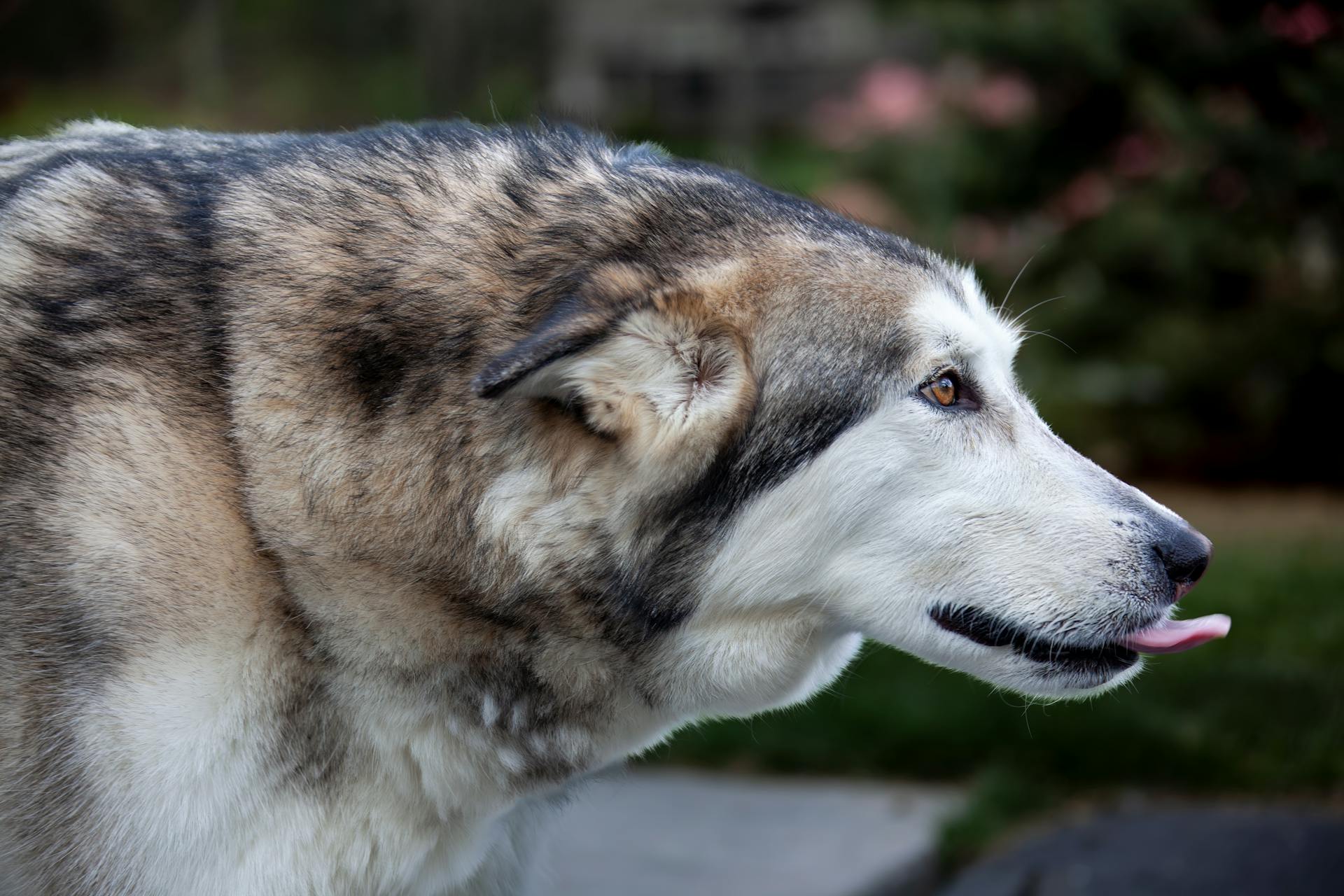
Both Alaskan Malamutes and Akitas have a similar life expectancy, which is a good starting point for new owners.
They're dogs that like to work, so they'll enjoy participating in mental stimulation games.
Both breeds are pretty quiet, only raising the alarm if they think something is suspect.
They need lots of socialization and training from a young age to lay down a good foundation for these large dogs that can quickly become too difficult to handle.
Take a look at this: Dogs like Alaskan Malamute
Care and Maintenance
When it comes to grooming, both Alaskan Malamutes and Akitas are fastidious dogs that like to clean themselves. Malamutes, in particular, are like cats and will often groom themselves extensively.
To keep their coats in good condition, you'll need to brush your Malamute at least a couple of times a week, and possibly more often during shedding season. Akitas, on the other hand, require a brush at least two or three times a week, and will shed more heavily two to three times a year.
Regular baths are also essential for both breeds, with Malamutes needing a bath every few months and Akitas requiring the same frequency.
Size
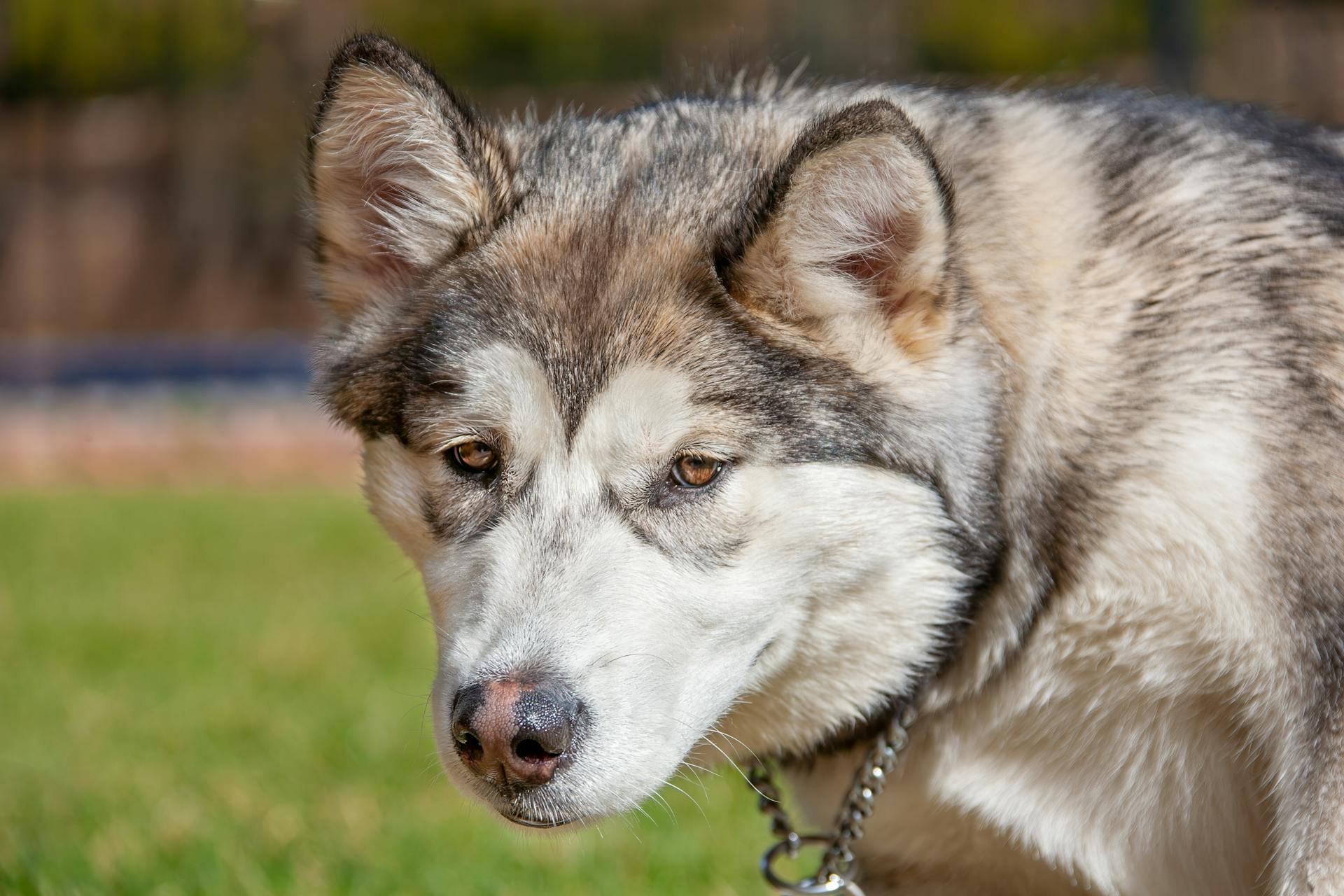
Alaskan Malamute mixes can grow to be quite large, easily exceeding 100 pounds in weight.
They can reach nearly 30 inches at the shoulder, making them a significant presence in any home.
These dogs are well-built and pack a lot of muscle and strength in their frames, which can be both impressive and intimidating.
Their height range is typically between 24 to 28 inches, although some may be slightly taller or shorter.
It's worth noting that the size of an Akita Malamute mix can vary depending on the individual dog and its parent breeds.
In general, however, these dogs are large and sturdy, requiring regular exercise and a spacious living area to accommodate their needs.
A fresh viewpoint: Dogs Similar to Malamute
Exercise
Exercise is crucial for both Alaskan Malamutes and Akitas, but they have different needs.
Alaskan Malamutes require a lot of exercise, with 60 minutes of activity per day recommended by Wag Walking. They thrive on challenging activities like hiking, swimming, and running alongside their owners.
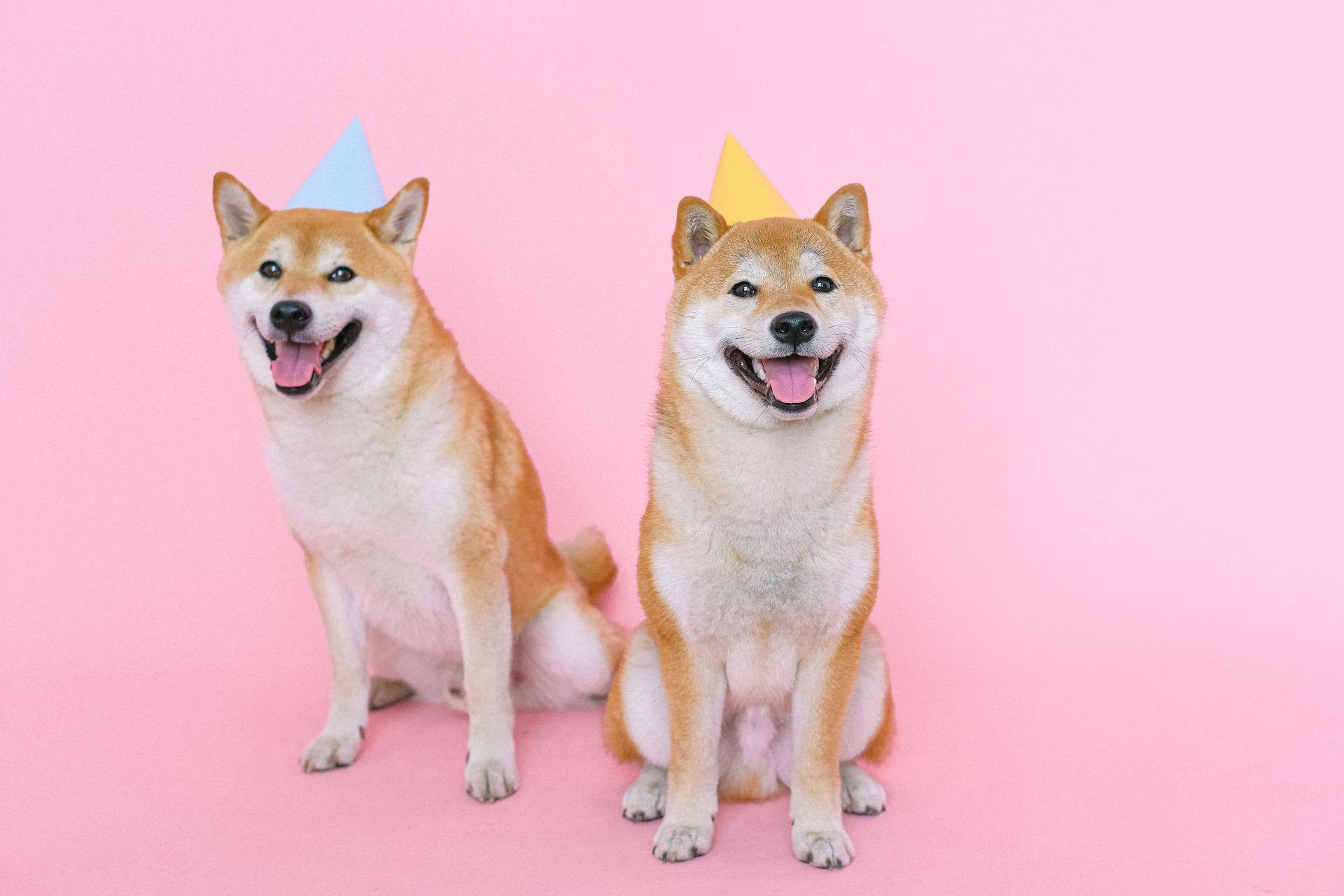
Akitas, on the other hand, don't need as much exercise, but a brisk walk or short jog can be sufficient. However, they still need mental stimulation to prevent unwanted behaviors.
Both breeds are accustomed to the cold, so they'll enjoy a hike in the mountains. But it's essential to remember that Akitas are smart dogs and need engaging activities to keep them happy and healthy.
Price
If you're considering bringing one of these amazing breeds into your family, you'll want to know the cost involved. Alaskan Malamutes have an average price range between $1000 and $2000 from a reputable Malamute breeder.
Their price is relatively consistent across the board, with a small variation depending on the breeder's reputation and the dog's lineage.
Japanese Akitas are a bit more affordable, with a price range of $700 to $1,600. American Akitas, however, can be quite pricey, with a range of $1,000 to $4,000.
Keep in mind that these prices are just estimates, and the actual cost may vary depending on various factors, such as the breeder's experience and the dog's bloodlines.
A unique perspective: Malamute Cost
Temperament and Training
Alaskan Malamutes are friendly dogs that don't play favorites with family members, they're equal-opportunity snugglers.
Akitas, on the other hand, are often cautious around strangers and may need extra socialization and training to feel comfortable around new people.
Alaskan Malamutes are not barkers, but they are chatty - yelps, howls, and "woo woos" are all part of their repertoire.
Akitas are quiet dogs that don't raise the alarm unless it's necessary, but they do have a strong guarding instinct and will monitor what's going on in the home.
Alaskan Malamutes thrive on human attention and are happy to welcome a crowd to your house, they're big dogs that might accidentally knock a child over if not supervised.
Akitas are loyal dogs who love spending time with their families and are intelligent and fairly energetic, they'd enjoy both mental and physical activities.
Alaskan Malamutes are strong-willed and may not respond well to other dogs if not properly socialized and trained, they have a high prey drive and may take off after critters or cats.
You might like: Are Alaskan Malamute Good Family Dogs
Akitas require lots of socialization and training from a young age, and throughout their lives, to ensure they know the difference between a foe and a friend.
Akita Malamute mixes are high-energy pups that will need rigorous training, but they can be as silly and carefree as they come when they're part of a family.
The key to training an Akita or an Alaskan Malamute is to start early and be consistent, as they can develop stubborn streaks if not well trained.
Alaskan Malamutes are naturally very friendly, even to strangers, which makes them terrible guard dogs, despite their large size and intimidating appearance.
Akitas are intelligent and generally respond well to training, but their independent streak can make training challenging, so patience and consistency are essential.
Intriguing read: Akita Inu Training
Family and Pet Compatibility
The Akita Malamute mix can be a great companion for active families with older children who can participate in their training. They need supervision to ensure everyone's safety and happiness.
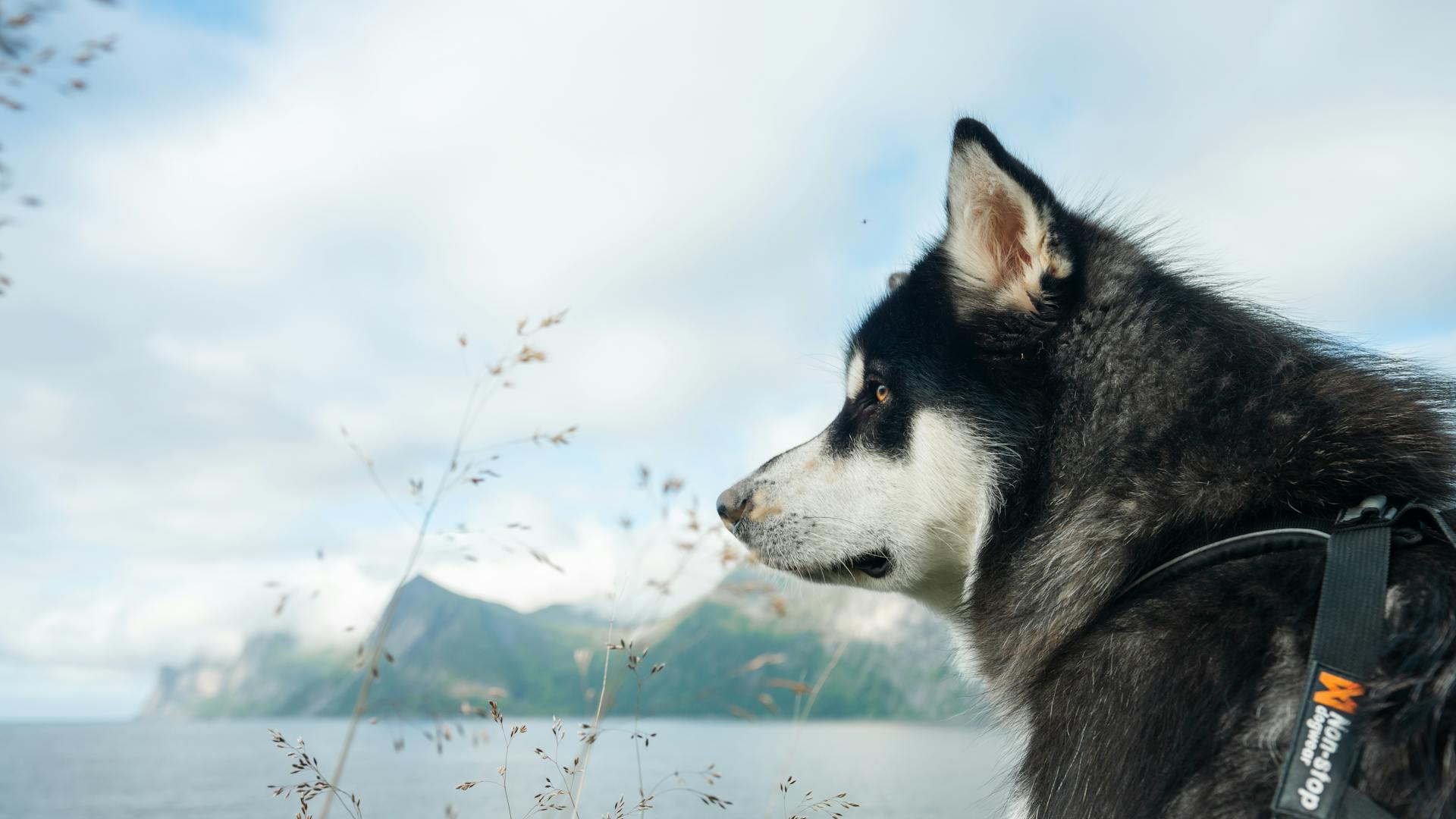
Families with small children aren't the best match for this breed due to their energetic and protective nature. They can be standoffish and may accidentally injure or chase smaller kids.
These dogs love to be involved in family activities, making them a great fit for households with plenty of time for play and exercise. They also require daily brushing to keep their thick fur happy and healthy.
Family-Friendly Dogs
If you're looking for a dog that's a great fit for your family, it's essential to consider their energy level and temperament. Families with small children might not be the best match for dogs like the Akita Malamute mix, as they're energetic and protective.
Older children who can participate in training can be a great asset to these dogs, but it's crucial to supervise interactions between them and the dog. The Akita Malamute mix will love to be involved in family activities, so be prepared for a loyal companion.
Active families who can provide regular exercise and mental stimulation will find that these dogs thrive in their company. Daily brushing is also a must to keep their thick fur under control, so be prepared for some extra grooming time.
Pet Compatibility
Pet compatibility is a crucial aspect of family and pet dynamics. The Akita Malamute mix, for instance, can be happy with other pets as long as they're well-socialized to them when they're puppies.
If you're thinking of introducing a new pet to your household, it's essential to consider the breeds involved. Both the Alaskan Malamute and the Akita have high prey drives, making households with cats or small pets better off keeping them separated.
Some Akita Malamute mixes may adore their feline companions, but it's best to keep large dogs with other medium to large dogs to avoid accidental injury or chasing behavior.
Unique Characteristics
The Akita and Malamute are both impressive breeds, but they have some unique characteristics that set them apart.
The Akita stands out for its thick double coat, which sheds heavily and requires regular grooming.
Both breeds are known for their loyalty and protective nature, but the Akita is particularly wary of strangers and may be more aggressive if not socialized properly.
Curled-Over Tail
The curled-over tail is a distinctive feature of the Akita Malamute mix, inherited from their parent breeds. This curly tail is a characteristic of the Malamute's original purpose, serving as a way to warm their noses in the snow.
The American Akita, a parent breed of the mix, also has a thick tail that typically curls over at the back, adding to the mix's likelihood of having a similar feature. This curled tail is a result of their thick double coats and Spitz-type appearance.
The Alaskan Malamute, the other parent breed, has a fluffy, curled tail, which is a defining feature of their Spitz-type appearance. This fluffy tail is a result of their thick double coats and pointed ears.
The curled-over tail of the Akita Malamute mix can vary in length and fluffiness, but it's often a defining feature of their appearance. This unique characteristic is a result of their mixed heritage and can be a fun conversation starter when meeting the dog.
Consider reading: Fluffy Malamute
Three Little-Known Facts About the Mix
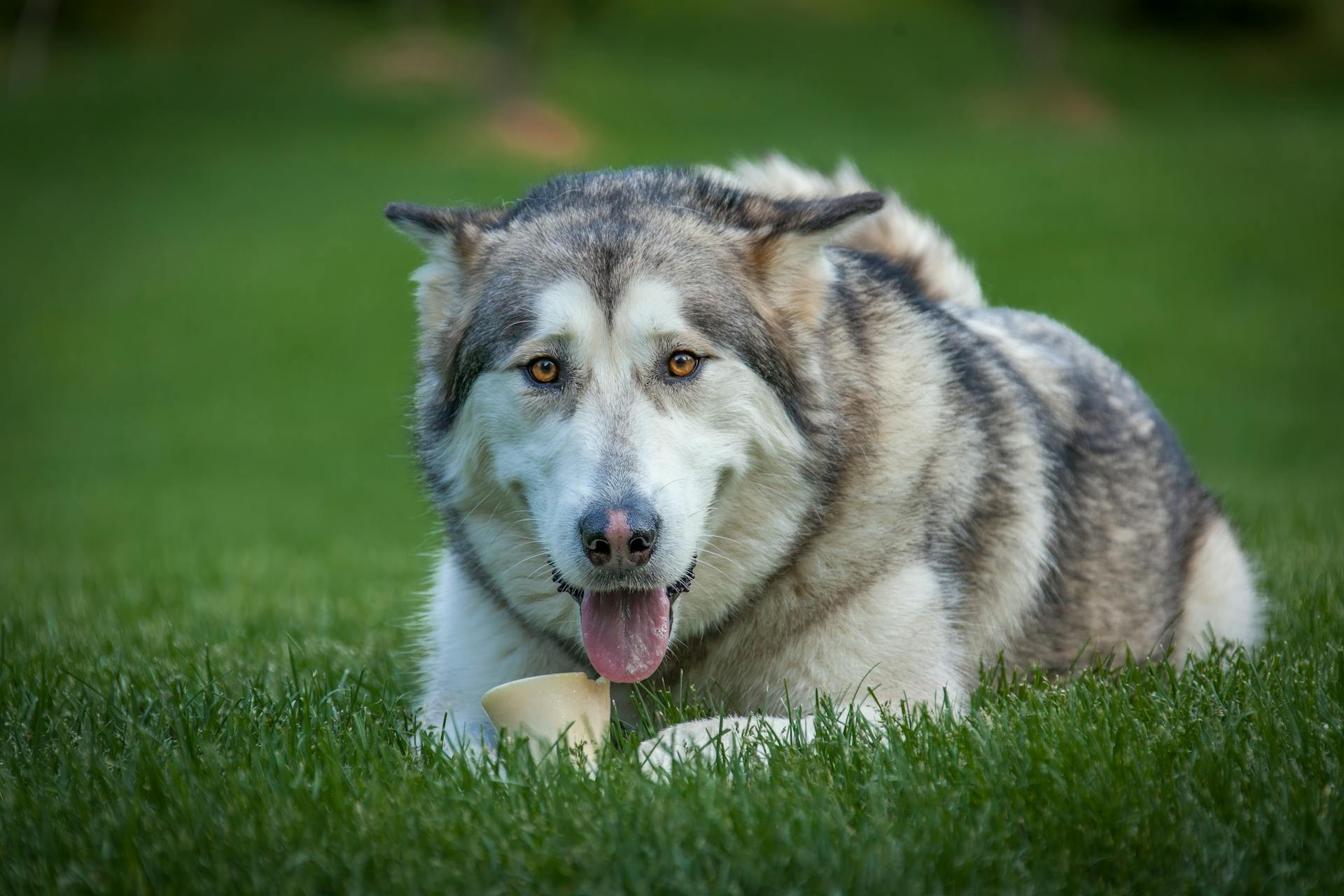
The Mix has some fascinating secrets. One little-known fact is that the Mix can be used to create a wide range of tonal colors, including pastels and metallics.
In fact, the Mix can produce over 16 million different colors. This is due to the unique combination of pigments and the special way they interact with light.
The Mix also has a special property called "lightfastness", which means that the colors will not fade or change over time when exposed to sunlight. This is because the pigments are carefully selected to be resistant to light degradation.
This is especially important for artists and designers who want to create pieces that will last for years to come.
Worth a look: Rare Alaskan Malamute Colors
Sources
- https://hellobark.com/dogs/alaskan-malamute-vs-akita-whats-the-difference/
- https://be.chewy.com/dog-breeds/compare/akita-vs-alaskan-malamute/
- https://www.hepper.com/akita-malamute-mix/
- https://www.themalamutemom.com/crossbreed-information/akita-malamute-mix/
- https://www.hepper.com/alaskan-malamute-vs-akita/
Featured Images: pexels.com
